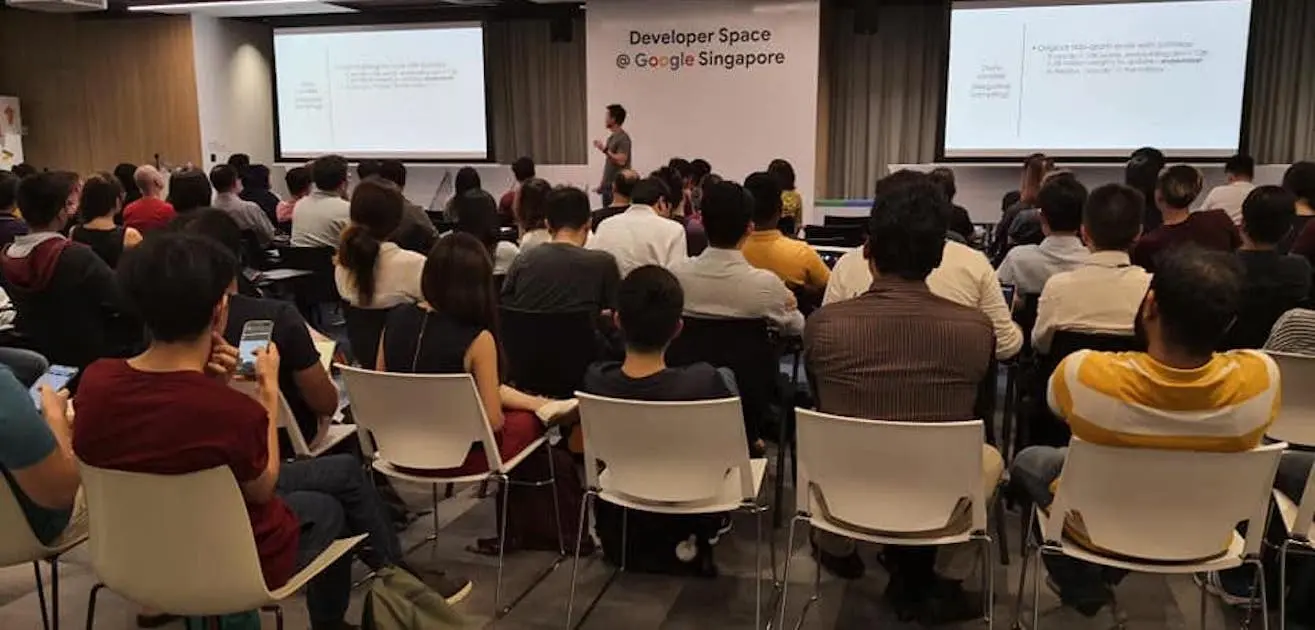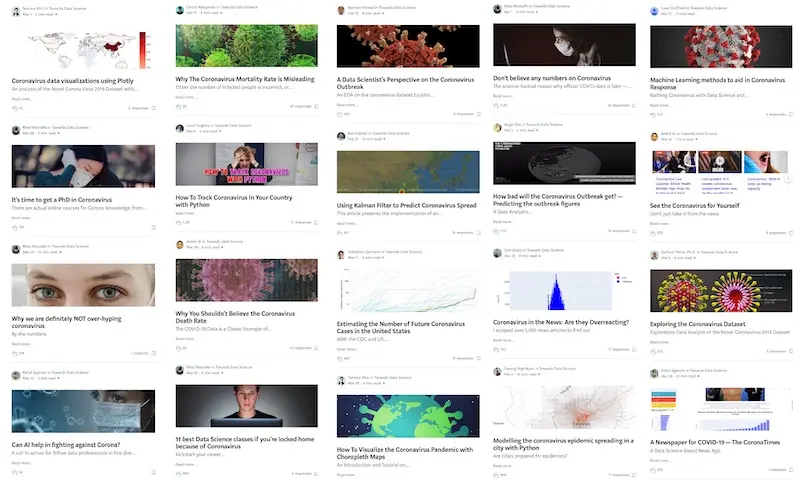How to Give a Kick-Ass Data Science Talk
At some point in your data science career, you’ll be asked to give a talk at work or a meet-up. How do you give a good data science talk, especially if it’s your first?
Wait, the thought of giving a data science talk never crossed your mind? Why not?
Well, let me first convince you to give a data science talk. Then, we’ll go through how to give a kick-ass one.
Why give a data science talk?
Because you have something you’re dying to share. It could be about your recent work or personal project, and the associated challenges, learnings, and results. Or it could be about an awesome framework or workflow you discovered that you want others to benefit from. Intrinsically, people enjoy sharing and helping others learn.
Because someone asked and you agreed (without thinking). Or perhaps you couldn’t say no, doesn’t matter. But now you’re having second thoughts because it’s scary speaking to an unknown audience. Embrace it—that discomfort is pointing you in the direction of growth.

Don't stress out like Ted (by Scott Adams)
Because it’s a great way to market yourself. Giving a talk helps to showcase your work and raise your public profile. If the talk is recorded, you can share it publicly in a scalable way. I got a role in an e-commerce rocket ship by sharing about my attempt at a Kaggle competition.
Because it’s a great way to hire. When Facebook and Twitter set up their APAC headquarters in Singapore, they reached out to a local meet-up group to host talks—it was a key hiring channel for them. Give a talk about the impactful projects your team is working on. You’re bound to find people who are interested to attend. Some might even linger after the talk to ask further questions. They are the people who are really interested about your work—hire them.
Now that you’re convinced to give a data science talk (am I too optimistic?), how do you make it a great one? Here are some guidelines that work well, based on my speaking experience and hosting close to 100 data science meet-ups.

My recent talk at Google about recsys, graphs, and NLP
7 ways to make your data science talk kick-ass
Topic: Importance > popularity
Don’t be the person who gives talks about the flavour of the month. How do you know what’s the flavour of the month? If there’re 10 articles about a topic on Medium (I’m looking at you coronavirus), that’s the flavour of the month.

Flavour of the Month (Feb - April): Coronavirus
Instead, share about a topic you think is important. While the audience it draws might not be as broad or large, it’ll help you find like-minded people and engage with them better. Also, if you’re passionate about the topic, you’ll have fun sharing about it. If you’re having fun, your audience will have fun too.
Sure-win formula: Problem -> What didn’t work -> What worked
Know what’s missing from academic papers and conference talks? Failure. Sharing about what doesn’t work isn’t going to get your work published or accepted at a conference.
Sharing about failure is very scarce. Yet, you learn 10x more from failure than success.
This is exactly why the audience loves hearing about failures (and the eventual success). They want to learn from your mistakes and avoid them. They want to learn how you iterated through what didn’t work before finally figuring it out. Sharing about failure also makes you seem more human and relatable. A talk that avoids failure is like a superhero movie without villains.
Numbers: Experiment results (and the bottom-line impact) are a must
Definition of anticlimax in data science talks: Sharing your awesome design and system without any empirical results. That’s like a terrible cliff-hanger movie where you have to wait for the sequel—except there’s no sequel to your talk.
“What you shared is awesome—but how do we know it works?”
You have to work to convince that your sharing is useful. This could be in the form of machine learning evaluation metrics or real-world outcomes (e.g., increased conversion, reduced fraud). Without numbers, what you shared is just theory without experiment results.
“If it disagrees with experiment, it’s wrong.” - Richard Feynman
(Note: Sharing concrete numbers about your projects is also a great way to ace a data science interview.)
Audience: Smart, but tired
Most talks (and meet-ups) are held on weeknight nights right after work. This means your audience is going to be tired or hungry. Or both. Also, while your audience is likely smart, they know next to nothing on your topic. And they’re not sure if they should care.
Don’t be like the college professor who crams way too much detail into each talk—it dilutes the message (and makes the audience zone out). Focus on the key points and deliver them strongly. Give the audience enough reason to care about your topic. Provide a well-written, representative synopsis of your talk at the sign-up page. It goes a long way in ensuring the right audience self-select to attend.
Your intent: Entertain > teach
Here’s a dirty secret: Most people attend talks—especially meet-ups—to be entertained. Some people attend to learn, but it’s a small minority.
How do you satisfy both groups of audience? My suggestion: Entertain first, teach second. Have your talk be 80% entertaining. This will appeal to everyone in the audience and make them want to learn more. Once you hook their interest, you can focus 20% on teaching. Make your talk more like edutainment, less like a thesis presentation.
Length: Keep it short; the real engagement happens after
If you’ve given talks before, you’ll find there are only a handful of questions during the Q&A. Then, after the talk, you’re swarmed with audience members who want to ask their questions individually. Then, the discussion gets lively with others chiming in. Often, this post-talk discussion (and dinner) is longer than the actual talk itself.
After observing this many times, I realise that the good stuff starts after the actual talk. This is when you get to engage with the curious (but possibly shy) folks with similar passions. They’re interested enough to stay back instead of rushing home.
Therefore, keep your talks short (30-45 minutes). Always stay back after the talk for more questions. You’ll be surprised by the spirited discussions and the new friends you make.
Slides: Maximum visual impact, minimal text
Don’t use your slides as a crutch. They should only add to what you’re presenting, or help to entertain (like those fancy keynote slides).
When going through your slides, ask yourself this: Without this slide, how much time is needed to get the point across? If it’s less than a half a minute, forgo the slide.
Slides you should have include:
- Tables of results for easy comparison across rows and columns
- Charts to visualise data (e.g., distributions, geography) or experiment results (e.g., learning curves, precision-recall curves)
- Design and architecture diagrams to give the audience an overview
- Light pseudo-code if explaining complex logic beyond a single if-else
Conclusion
If you’re in the field of data science, you can’t avoid giving a (public) talk forever. Face it head on—it gets easier with each talk.
The “Whys” and “Hows” above are based on my insider experience as a speaker and meet-up host. Speakers who adopt some of the “Hows” give great talks based on audience feedback. If you keep the “Hows” in mind, you’ll do well.
If you’re still uncertain, here are two example talks (with slides) about a machine learning system built at work and a personal project about recommender systems, graphs, and NLP.
Looking forward to your talk. Break a leg!
Thanks to Xinyi Yang, Huiyi Yang, and Marianne Tan for reading drafts of this.
If you found this useful, please cite this write-up as:
Yan, Ziyou. (Apr 2020). How to Give a Kick-Ass Data Science Talk. eugeneyan.com. https://eugeneyan.com/writing/how-to-give-a-kick-ass-data-science-talk/.
or
@article{yan2020talk,
title = {How to Give a Kick-Ass Data Science Talk},
author = {Yan, Ziyou},
journal = {eugeneyan.com},
year = {2020},
month = {Apr},
url = {https://eugeneyan.com/writing/how-to-give-a-kick-ass-data-science-talk/}
}Share on:
Browse related tags: [ datascience writing ] or
Join 11,800+ readers getting updates on machine learning, RecSys, LLMs, and engineering.